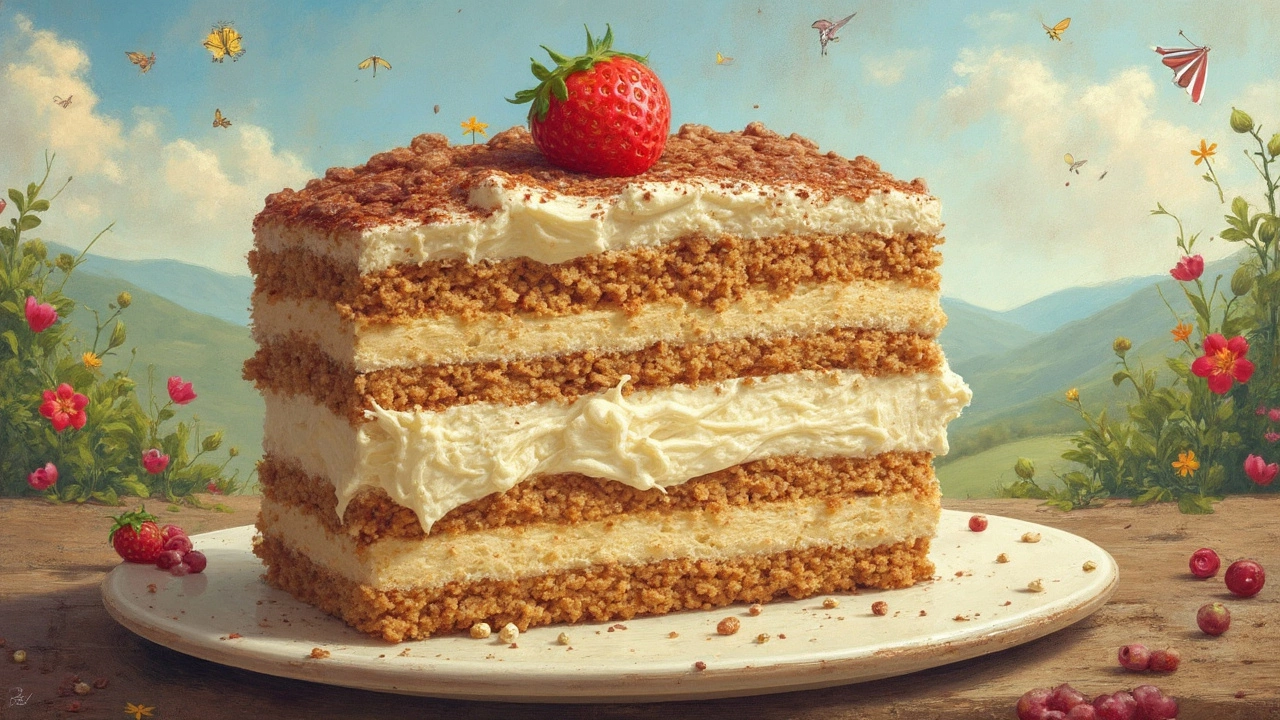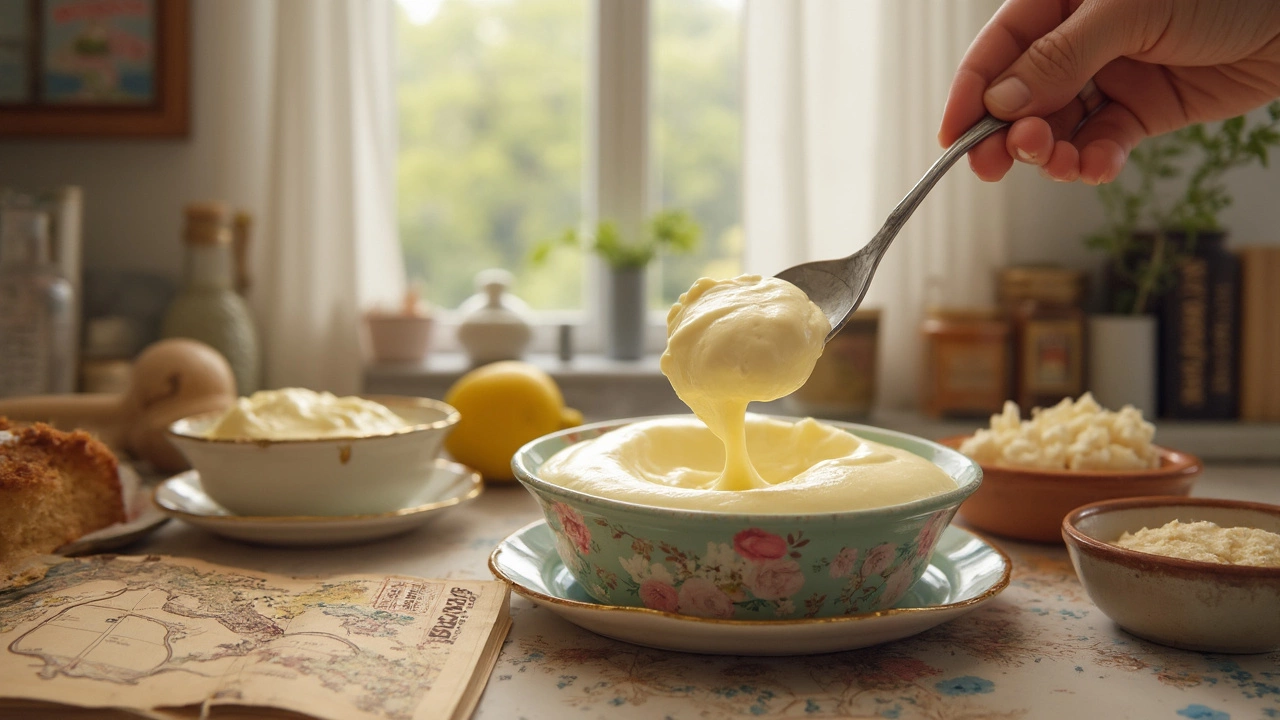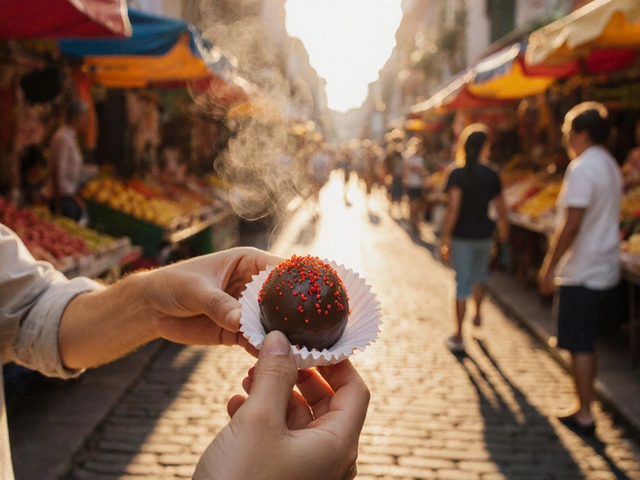If you’ve ever tasted tiramisu, you’ve met mascarpone—probably without knowing much about what sets it apart from other cheeses. Mascarpone’s story isn’t as old as parmesan or as obvious as mozzarella. In fact, it comes from a specific region in Italy, and its original use had nothing to do with desserts at all.
People often confuse mascarpone with other creamy cheeses, but if you try swapping it out in your tiramisu, you’ll see it’s just not the same. This cheese gives tiramisu its velvet texture and that rich mouthfeel. There’s a good reason bakers and home cooks go out of their way to hunt down the real deal rather than settling for substitutions.
Let’s cut through the confusion and figure out how mascarpone became a dessert staple—and how you can pick out good mascarpone when standing in front of a crowded dairy fridge. Plus, knowing exactly where it comes from adds a bit of kitchen bragging rights, so keep reading for some fun tips and history bites you won’t see on most cheese labels.
- Tracing Mascarpone’s Roots
- How Mascarpone Became Essential for Tiramisu
- What Makes Mascarpone Different
- Tips for Picking and Using Mascarpone
Tracing Mascarpone’s Roots
The story of mascarpone starts in northern Italy, right around Lombardy. If you want a precise location, think about areas close to Milan and Lodi. This creamy cheese first popped up in the late 16th or early 17th century, so it’s not the ancient type of cheese you’ll run into with parmesan or pecorino. Mascarpone was born out of the simple idea to use up extra cream, and local farmers figured out they could thicken it with something acidic—usually lemon juice or vinegar. The result? Rich, spreadable cheese that wasn’t salted or aged.
People sometimes think mascarpone has always been the star of fancy desserts, but that’s a pretty recent thing. Originally, folks just dolloped it on bread or ate it with fruit. It stayed a local treat for a long time, almost like a secret ingredient in home kitchens around Lombardy.
The name “mascarpone” has a bit of mystery, too. There’s a story that it comes from the Spanish word "mascarpa," which referred to a different type of whey cheese. Others say it’s from the local dialect for “better than good” (mas que bueno). No matter which tale you believe, one thing’s clear: by the time tiramisu became popular, mascarpone was ready for its big break.
| Fact | Details |
|---|---|
| Region of origin | Lombardy, Italy (especially near Milan) |
| First recorded use | Late 1500s to early 1600s |
| Main ingredient | Cow's milk cream |
| Traditional coagulant | Lemon juice or vinegar |
If you’re visiting Italy and spot mascarpone on a breakfast table, chances are you’re somewhere up north. But thanks to tiramisu, mascarpone has now made its way into stores around the world, happy to ditch its small-town reputation for international fame.
How Mascarpone Became Essential for Tiramisu
It’s wild to think, but mascarpone wasn’t always tangled up with tiramisu. Before it ever met ladyfingers and espresso, mascarpone showed up mostly in savory dishes and as a spread in Lombardy, Italy. So how did it go from cheesy sidekick to the creamy heart of the world’s most famous Italian dessert?
The answer: the 1960s. That’s when tiramisu as we know it really started showing up on Italian restaurant menus. Chefs wanted a creamy element that didn’t overpower the other flavors but could blend smoothly with eggs, sugar, and coffee. Heavy cheeses like ricotta or cream cheese fell flat. Mascarpone, with its buttery, mild taste and silky texture, was the golden ticket. Once Italian cafés in Treviso and Venice started serving tiramisu with mascarpone, there was no turning back—it became the standard.
Want some specifics? Here’s what sets mascarpone apart for tiramisu:
- Texture: Mascarpone is rich and spoonable, turning the mascarpone-egg-sugar mix into a billowy dream. It holds the structure while staying soft.
- Flavor: Super mild—almost sweet compared to tangy cream cheese—so it lets the strong espresso and cocoa really shine without clashing.
- Blendability: When you whip it with eggs and sugar, it turns into a perfectly smooth filling. No lumps, no graininess—just silkiness all the way through.
Once tiramisu recipes hit America in the 1980s, mascarpone got even more famous. Imports shot up, and grocery stores started stocking it—not just specialty Italian markets anymore. Even today, good tiramisu recipes will call out mascarpone by name. Swapping it out changes everything, and honestly, most folks who try to use plain cream cheese or heavy cream end up disappointed.
Here’s a quick look at mascarpone’s role in tiramisu compared to other cheeses, just to see why it wins every time:
| Cheese | Texture | Flavor impact | Common in Tiramisu? |
|---|---|---|---|
| Mascarpone | Creamy, smooth | Neutral, buttery | Yes |
| Ricotta | Slightly grainy | Very mild | No |
| Cream Cheese | Dense, tangy | Tangy, heavy | No |
| Heavy Cream | Fluffy, light | Mild | Only as an add-in |
Simply put, mascarpone makes tiramisu what it is. Trying to do tiramisu without it is like making pizza without cheese. Sure, you could—but you’ll miss what everyone actually comes for.

What Makes Mascarpone Different
First off, mascarpone isn’t technically made the way most cheeses are. Instead of using animal rennet or bacteria, it’s simply thickened with acid—usually citric or tartaric acid. The result? A cheese that’s ridiculously smooth and easy to spread, but much richer than something like cream cheese. If you’re holding a tub of mascarpone next to ricotta or cream cheese, you’ll notice it’s way softer, silkier, and almost melts as soon as it hits your tongue.
The next big thing that sets mascarpone apart is fat content. You’re looking at anywhere between 60-75% butterfat, which is much higher than most fresh cheeses. That fat is what brings out the decadent texture and the rich, slightly sweet flavor that makes tiramisu taste so good. Ricotta or cream cheese just can’t mimic that—it’s a key reason swapping them in recipes usually ends in disappointment.
This cheese is also mild, almost neutral in taste but with a gentle sweetness. That means it plays well with both desserts and some savory dishes. You’ll see mascarpone in both fruit parfaits and pasta sauces. Still, it shines most in desserts because it blends perfectly without overpowering other flavors.
Curious about how mascarpone compares to other cheeses when it comes to fat and texture? Check out this quick cheat sheet:
| Cheese | Fat Content | Texture |
|---|---|---|
| Mascarpone | 60-75% | Silky, spreadable |
| Cream Cheese | 33% | Firm, a bit crumbly |
| Ricotta | 13% | Curdy, grainy |
One more practical difference: mascarpone doesn’t have preservatives like the spreadable cheeses you’ll find at the grocery store. It goes bad quickly. If you spot mascarpone on sale and think you’ll use it for just about anything, keep in mind that it won’t last as long once opened. That luscious texture is best served fresh, so try to buy it as close as possible to the day you plan to use it.
Tips for Picking and Using Mascarpone
Not all mascarpone you see in stores is created equal, and if you're using it for tiramisu, quality really matters. First off, always check the ingredients. Authentic mascarpone should only have cream (and sometimes a little citric or tartaric acid). If you spot thickeners, gums, or non-dairy fillers, that's a red flag—these can mess with the creaminess and flavor.
Freshness is super important. Mascarpone's shelf life is usually short—sometimes just a week or two from production. Always check the sell-by date. If you have a deli or specialty shop nearby, try to get their opinion or taste a sample; fresher mascarpone has a smooth texture, is snowy white, and smells a bit like fresh cream with no sour or funky odors.
Here's a quick cheat sheet for spotting the good stuff:
- Pure white color (avoid yellowish or grey)—this means it's fresh.
- Soft and spreadable but not runny or watery.
- Simple ingredients: cream and acid only.
- Mild, creamy flavor with zero tang or bitterness.
When it comes to using mascarpone cheese in Italian desserts like tiramisu, keep it cold until you’re ready to blend, but let it sit out for a few minutes beforehand. Cold mascarpone can turn grainy if whipped too much straight from the fridge. If it ever looks separated, give it a gentle fold (not a whisk). Don’t ever freeze the cheese—that’ll ruin its smoothness for desserts.
Some folks try to make their own mascarpone at home. It’s just cream and lemon juice or vinegar, simmered and strained, so if you’re ever desperate, it’s doable. But honestly, store-bought, high-quality mascarpone is more reliable for that perfectly silky tiramisu.
Price-wise, expect mascarpone to cost more than regular cream cheese. Here’s a ballpark comparison chart (prices as of 2025):
| Cheese | Average Price (USD, 8oz) |
|---|---|
| Mascarpone | $5.50 |
| Cream Cheese | $2.50 |
| Ricotta | $3.00 |
Best tip? If you want to impress with your tiramisu, don’t cheap out on the mascarpone. Your tastebuds—and anyone who shares dessert with you—will notice.





